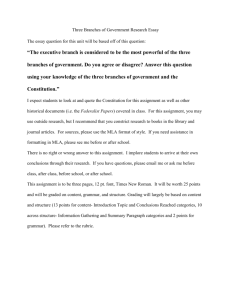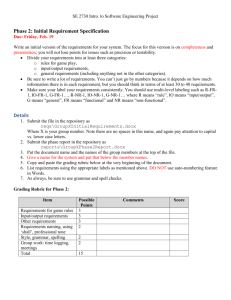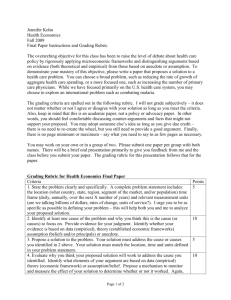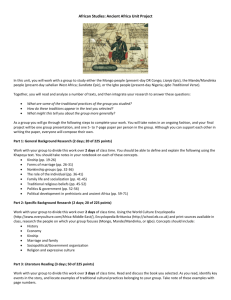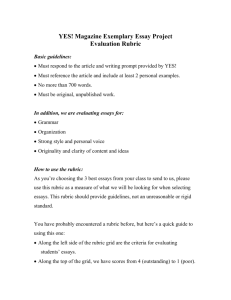Part 2 - EigoBento
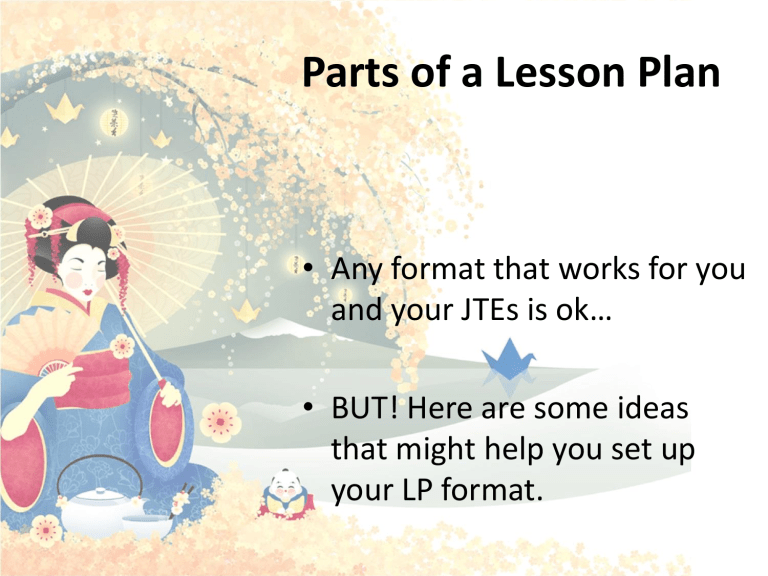
Parts of a Lesson Plan
• Any format that works for you and your JTEs is ok…
• BUT! Here are some ideas that might help you set up your LP format.
Parts of a Lesson Plan
• Date
• Location
• Topic
• Lesson Goal or objective
• Materials
Parts of a Lesson Plan
• Warm-up
• Lesson
– Lead-in/Hook
– I Do: Explain material or activity
– We Do: Demonstrate with JTE or a student
– You Do: Students complete activity themselves
• Cool Down
• Note: Keep activities short (10-15 min)…students have short attention spans)
Supports and Extensions
• Not all your students will be at the same level in English.
• “Supports” provide extra help for those students who need a little extra help.
• “Extensions” provide an extra activity for those students who finish quickly.
Basics on Assessment
• Why we assess
– to decide what to teach/review next.
– to measure/report on what was learned.
• To check our students learning or performance and to check the effectiveness of our curriculum
Types of assessment
Formal
• written
• graded
Assessment
Informal Assessment
• performances
• portfolios
•peer/self evaluation
• rubric
“ objective ”
• there is only a single correct answer
• T/F, multiple choice, matching
“ subjective ”
• there are many ways to be correct
• Essays, opinions
Keys to successful assessment
1.
Validity
2.
Reliability
3.
Bias
Assessment - Validity
• Does the assessment actually evaluate what you want to check?
– A student can speak great English, but if they don’t understand the instructions or vocabulary, they don’t have a chance to perform at their level of ability on a speaking test.
– Grading Essays: what is the goal of the essay? Communication? Vocabulary use?
Grammar. Decide what is important and try to ignore the rest when possible.
Assessment - Reliability
• Is the assessment consistent in evaluating across students (and even across evaluators)?
– A vague scale for grading presentations enables evaluators to change their opinions on students performance.
Assessment - Reliability
– Imagine a speech contest where the judges are allowed to give 50 points, but aren’t told how the 50 points are allotted If they dislike the subject or something about the student, they may deduct points unfairly.
– For good reliability, the point system for grading should be objective. Students should know exactly what to do to earn the points. This gives the a clear goal to work toward.
Assessment - Bias
• What color is the light?
• It’s blue in Japan (even though
Japanese recognize the color as green outside this context).
Bias: Does the assessment unexpectedly give unfair advantage or disadvantage to certain students?
Thus, good assessment is…
• Reliable – i.e. consistent. Students with similar abilities will get similar scores, even at different times with different assessors.
• Valid – i.e. it measures what it is supposed to measure.
• Unbiased – i.e. it doesn’t unfairly advantage or disadvantage any students.
Assessment Tools
• Test (multiple choice, matching, fill in the blank, essay)
• Rubric (scale to make subjective scoring objective)
• Student Portfolio
• Observation
• Student Reflection
Assessment Tools
• Test (multiple choice, matching, fill in the blank, essay)
• Rubric (scale to make subjective scoring objective)
• Student Portfolio
• Observation
• Student Reflection
Final words on Assessment
Remember to self-assess
Ask JTEs for advice, they are the best source
If all students fail, ask “Did you fail as a teacher?”
Get feedback from students
Remember Japan is a different culture and certain lesson ideas that work great back home won't necessary work here.
Time to Practice
• In small groups, use the A3 lesson plan templates to make a plan for the topic you are given.
• Make sure to include some supports and extensions.
• Try to include components of all 4 skills.
Lesson Plan Bazaar
• Now we’ll have some time to read each other’s great ideas.
• You can present your lesson plan and the other groups can give you some feedback.
Feedback :
– Extra ideas for the topic
– Anything is ok
Lesson Plan Rubric
• Class Goal
• Lesson Objective
• Tasks
• Responsibilities
• Materials
Teaching Resources
(Pg 36)
Clip Art
Grammar
Videos
Assessment
Materials

